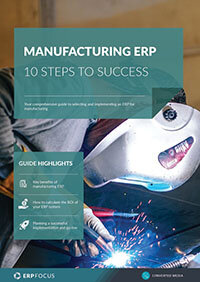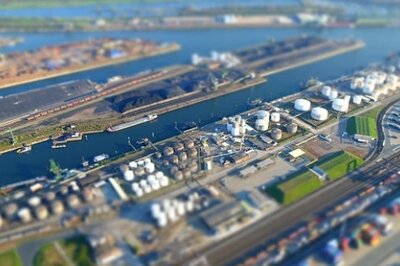3 advantages of multi-facility manufacturing ERP
If you are using manufacturing ERP, there is a good chance you have more than a single manufacturing site. You could have sites in multiple countries too, this is common today even among many mid-size businesses. With geographic growth, comes a number of challenges associated with our ERP systems. One such challenges is the consolidation of many disparate systems which were established as new manufacturing sites were launched. This disparity can quickly spiral out of control, so it may be time to implement a multi-facility ERP which can offer many advantages.
1. Standardized financials
Financial reports are faster to produce when all the debits and credits are in a single currency and accountants at each site use a common reporting framework. Wherever your sites are, from Alaska to Adelaide, a single ERP is beneficial. Local financials can be dollars and cents or pounds and pence. One challenge, however, is that transactions at international sites will need to be converted locally.
2. Centralized reporting and communication
Another valuable benefit is compliance reporting that can be easily coordinated from a central office and distributed with confidence anywhere a report is required. Communications within the organization might be the most important reason to implement multi-facility ERP. Any user, anywhere in the world can see the exact same sales order and the same status of the job in progress which will fulfill that order. When one user sees a problem, that problem is visible to users throughout the company and other users can easily help to solve the problem. Profitability of customer account reports are common to all users because all measure profit the same way.
Recommended reading: Manufacturing ERP - 10 steps to success
3. Shared process improvements
Standardizing ERP across manufacturing sites also helps to share best practices. When users at one site develop process improvements, users at another site might only need to update settings in their local version of the same ERP to reproduce those improvements.
When those different manufacturing sites produce different products using different processes, there are challenges to resolve. This is especially true when one site uses process manufacturing and another might use a discrete manufacturing method. Many of today's ERP providers offer different versions to different markets. Since they will all use the same database, this is not an issue. Even when one site requires a highly specialized ERP, the two systems can often be integrated so that data flows from the specialized system to the common one. Most likely, the specialized system will be primarily for manufacturing and the standard ERP will be the sole source for most reporting.
As a general rule, try to standardize and use a single ERP across all manufacturing sites. But, if that is not possible, you should be able to use the best tools at any site and retain most of the benefits of standardization.
Free white paper

Manufacturing ERP: 10 steps to success
Complete step-by-step guide to manufacturing ERP software

Related articles
-

Process manufacturing ERP: formulas and recipes
Find out about the challenges your process manufacturing ERP will face when it comes to recipes a...
-

CMMC Compliance: What Aerospace and Defense Manufacturers Need to Know
Key insights on CMMC compliance, deadlines, and securing DoD contracts with CMMC 2.0 certificatio...
-

3 steps to standardizing ERP across operational sites
Learn about the best practices and lean models that you can use to standardize ERP across multipl...

